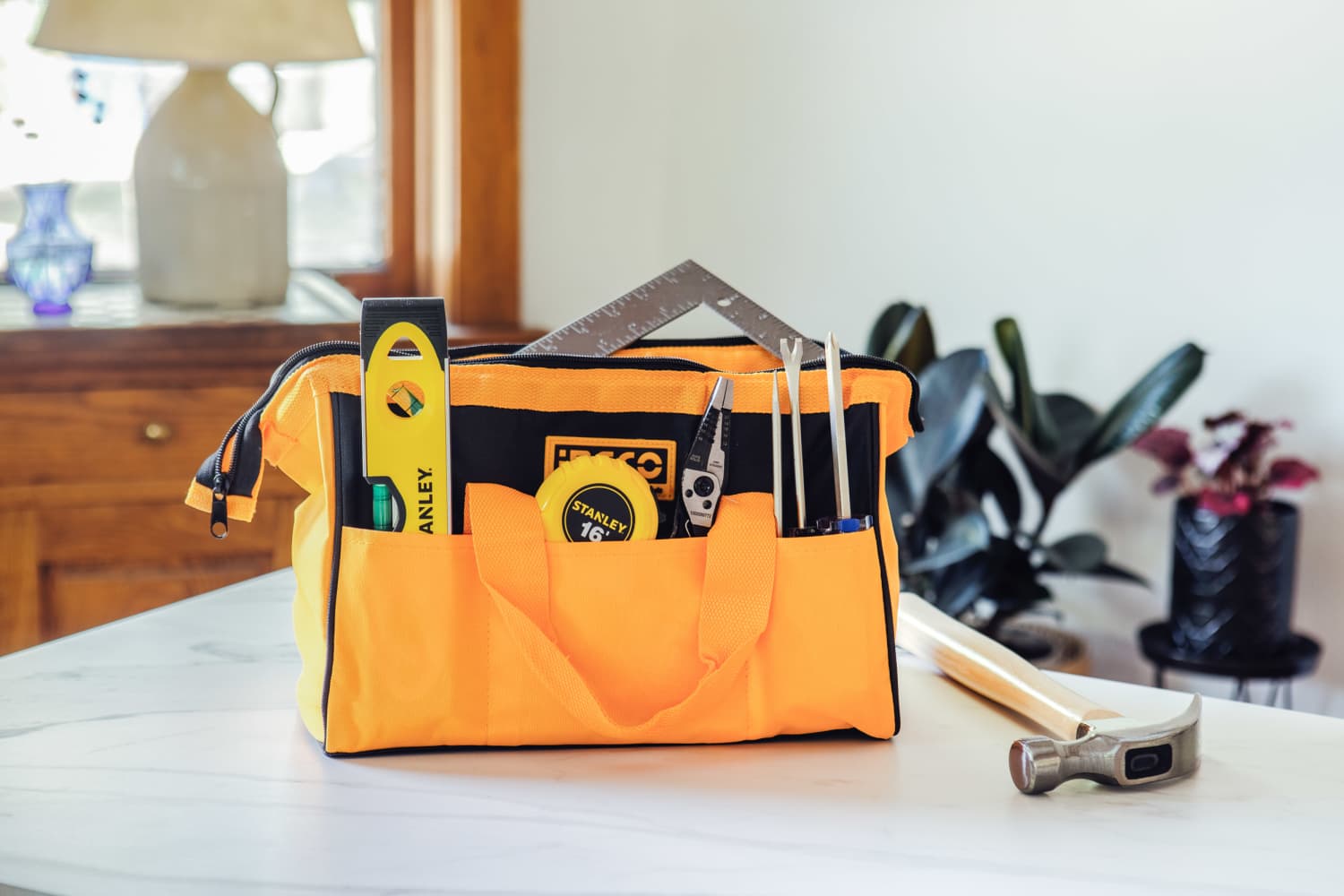[ad_1]
If you’ve ever hung a picture in your home, you know just how important it is to be able to tell when things are level. After all, nothing ruins a gallery wall like a bunch of crooked frames! For beginner DIYers, knowing how to use a basic bubble level can make a huge difference in the success of your project. But knowing how to use a laser level can help take your project to the next, ahem, level. You can find several different types of laser levels on store shelves, and if you do any DIY work around the house, it pays to know about them, because they can help you do a better job.
Some laser levels are pro-grade tools with pro-grade price tags, but many are less expensive, DIY-friendly products that you can use indoors or outdoors. As a builder and remodeler, I’ve used laser levels for years, and I’ve been amazed at how useful they can be — even inexpensive ones. Ahead, you’ll find tips on choosing a laser level for your project and pointers for how to use a laser level once you have one in hand.
Why Would You Need a Laser Level?
Consider this scenario: Your walls are bare, and you want to decorate them with hanging art. How do you set the frames a uniform distance from the floor?
You could get out your tape measure and pencil, measure from the floor or ceiling, and make a mark on the wall for each one, but that’s a little tedious! It also won’t work if the floor or ceiling isn’t level (which is common, especially in older homes). A faster, easier way to do this project is to set a laser in the middle of the floor and use the straight line it projects on the walls as a reference.
Hanging a perfect gallery wall is just one case in which a laser level comes in clutch. Here are some other ways you can save time and effort by using a laser level.
Projects You Can Do with a Laser Level
How to Choose a Laser Level
When you shop for a laser level, your first consideration will probably be what you want it for, and your second will be how much you want to spend. Different types suit different purposes and have different price tags. Here are the types of most interest to a DIY interior remodeler.
A single-line laser is the easiest laser level to use, and it’s also the least expensive. It creates a single visible laser line you can use as a reference for general leveling operations.
The Kobalt Torpedo Laser Level costs $33 and has a 30-foot range, which makes it suitable for most indoor and some outdoor applications.
A cross-line laser shoots visible beams straight ahead in the horizontal and vertical plane. It’s great for aligning cabinets, plumbing doors and windows, and other indoor applications.
The Bosch GLL, at around $65, is one of the most affordable. The beam has a range of only 30 feet, but that’s plenty for most indoor applications.
A dot laser projects one or more beams that show up as dots on a surface above or to the side of the tool. Although the beam isn’t visible, you can see the dot and use it for aligning cabinets and pictures and, as previously mentioned, positioning things on the ceiling.
No matter which model you choose, it will come with its own set of instructions, so make sure you read those before using the tool.
In general, here are the steps to follow when using a laser level.
1. Set the level in position.
You have to mount the level at the height you need the beam to be for your project. Some models come with a clamp that you can attach to the edge of a table, chair, or workbench; others have a wall-mount base, and still others are designed to be used with a tripod (sold separately). Of course, if the tool has a flat base, you can also simply place it on any flat, stable surface.
2. Turn on the laser level and calibrate it.
The tool itself needs to be level in order to project a level beam. If you have a manual model, use the adjustable thumbscrews and the bubble levels installed in the housing to level it. If you have a self-leveling model, just give it time to self-calibrate.
Aim the laser in the desired direction and turn on the beam. It may form a single line, a pair of crossing lines, or a dot, depending on the model. Use the beam as a reference to hang your pictures, install your cabinets, set your tiles, or complete whatever project you’re doing.
Laser Level Tips and Pointers
How to Better See Laser Levels
The standard laser beam color is red, which can be hard to see in bright conditions. If you’re working outdoors or in a well-lit room, it may be worth the extra expense to choose a model that projects a more visible green beam.
Should You Buy a Self-Leveling Laser?
Self-leveling lasers are more expensive than manual ones, but the extra cost is worth it, especially if you use your level frequently. Manual setup can be time-consuming and introduces the possibility of error.
A Combo Level Is a Useful Option
Some ordinary bubble levels include a laser as an added feature. These combo tools are usually inexpensive (the Johnson Magnetic Torpedo Level costs about $20), and they give you the option of using the bubble or the laser beam to do your leveling.
[ad_2]
Source link











